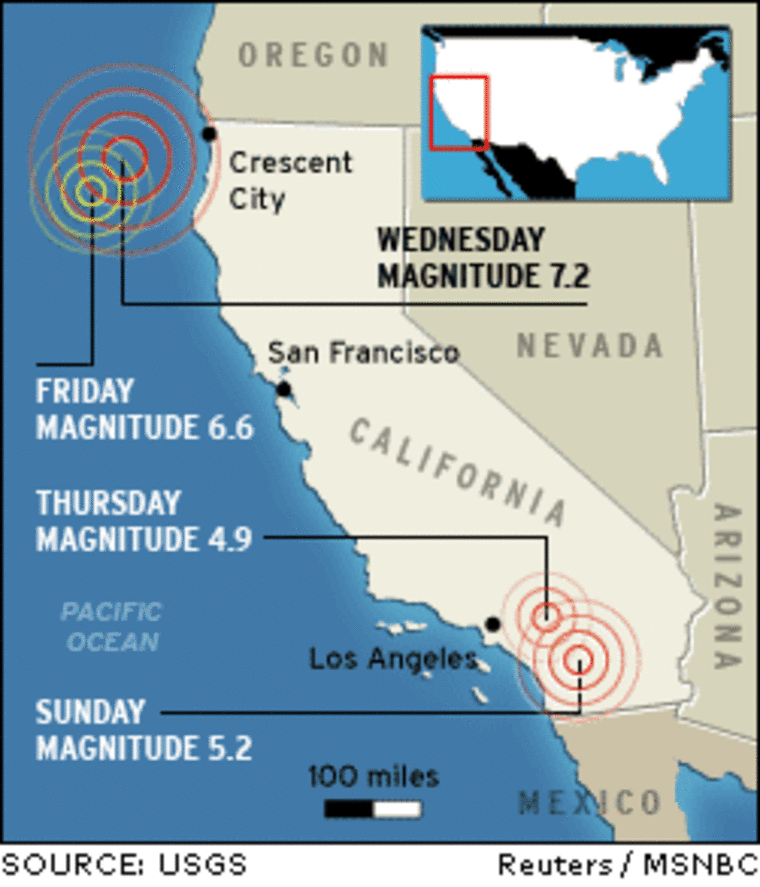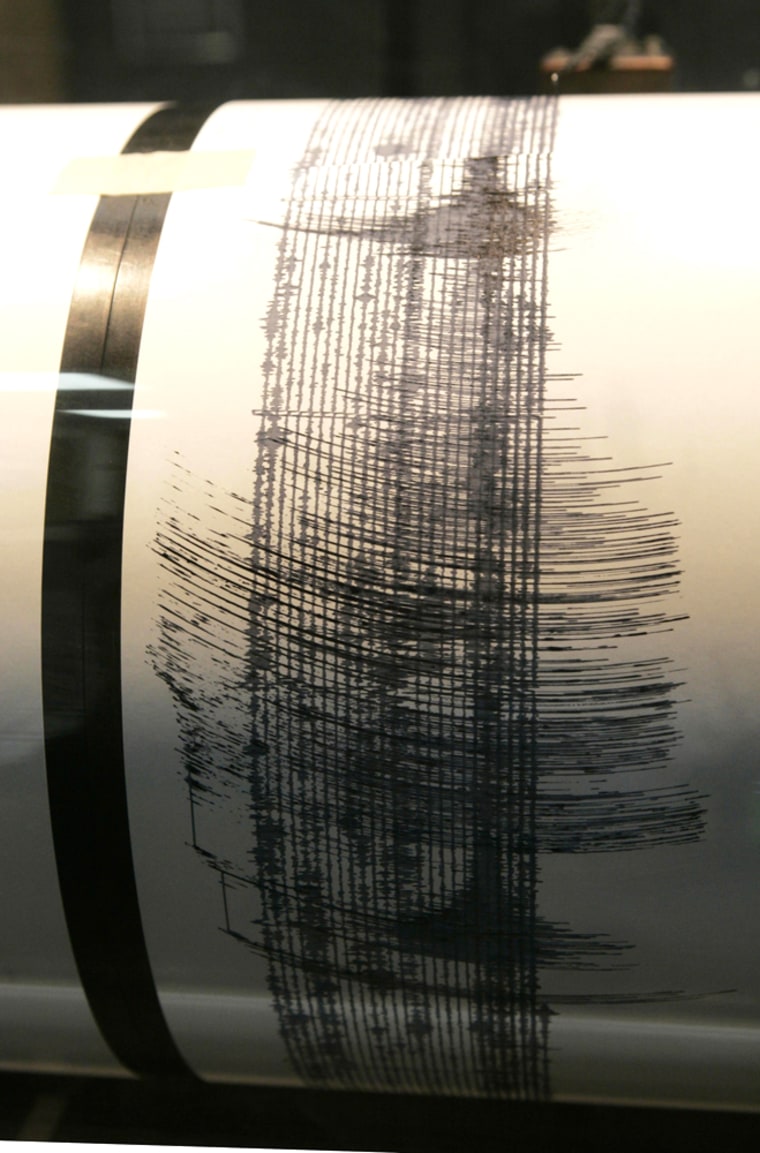After four significant earthquakes in less than a week, Californians are getting jittery, with some stocking up on water, food, cash, even insurance. But seismologists say clusters of quakes are not unheard of and do not necessarily mean the Big One is coming.
After several years of relative seismic calm, the recent quakes are a not-so-gentle reminder that the ground here is never as solid as it seems.
The shaking began Sunday morning with a magnitude-5.2 temblor in the Anza area of Riverside County, about 90 miles southeast of downtown Los Angeles. That was followed by a magnitude-7.2 quake Tuesday night under the Pacific Ocean off Eureka — an unrelated incident that prompted a tsunami warning.
Thursday brought two quakes that were 10 hours and about 700 miles apart: one of magnitude 4.9 in San Bernardino County and another late that night of magnitude 6.6, also centered off the Northern California coast.
Residents worried about the ‘Big One’
As groups of quakes often do, this week's shaking brought murmurs of the "Big One" — the kind of quake that moves mountains and levels entire cities.

"I think we're on our way to the 'Big One,'" said Jacki Breger, 61, executive director of a Los Angeles charter school who plans to overhaul the school's emergency plans by this fall. "It makes me really nervous with so much quake activity."
Marian Garcia, 24, isn't taking any chances. She stuffed two backpacks with sweaters, shoes and canned food, and her 4-year-old daughter now sleeps with her instead of in the little girl's own bedroom.
"In case we have to get out there, I want to be close to her," said Garcia, who works at a downtown Los Angeles flower stand.
Some studies have suggested that the San Andreas fault, which leveled much of San Francisco in 1906 and extends more than 800 miles through California, may be about to release pent-up energy.
But that's not a consensus opinion — earthquakes just aren't that predictable, and a few jolts don't necessarily mean a huge quake is imminent.
"We don't know whether the 'Big One' is coming," said Tom Jordan, director of the Southern California Earthquake Center.
The last major rupture on the fault's southern portion was 1857.
The flurry of quakes typically leads homeowners to buy earthquake insurance, which only about 14 percent of homeowners currently have.
In the aftermath of the Northridge earthquake in 1994, the number of homeowners who purchased quake insurance policies rose to 29 percent, said Pete Moraga, spokesman for the Insurance Information Network of California, a nonprofit trade association that represents insurers.
Stocking up
Phillip Mookerdam, co-manager of the Supply Sergeant store in Santa Monica, said customers began arriving soon after the magnitude-4.9 quake rattled the region.
"They started calling and walking in, asking whether we carry survival kits," he said.
Sales of those kits — which include solar-powered radios, dry food, water, flashlights and a first-aid kit — have been brisk, Mookerdam said.
Residents have also been stocking up in Crescent City, where the 7.2-magnitude offshore earthquake triggered a tsunami warning.
Ray's Food Place has seen an increase in sales of canned foods, batteries and water. People were afraid that a major earthquake or tsunami could lead to road closures or shut down water and electrical systems.
"They want to be able to be more self-sufficient in case roads close and they can't get to the grocery store, or in case the groceries can't get to the stores," manager Jeff Wheelon said.
Elsewhere in Southern California, some owners took their dogs to the veterinarian for tranquilizer shots.
"The ones that are frantic are usually the ones with owners that are frantic, too," said Marilyn Lilla, 58, who works at the General Dog and Cat Hospital in San Bernardino.
